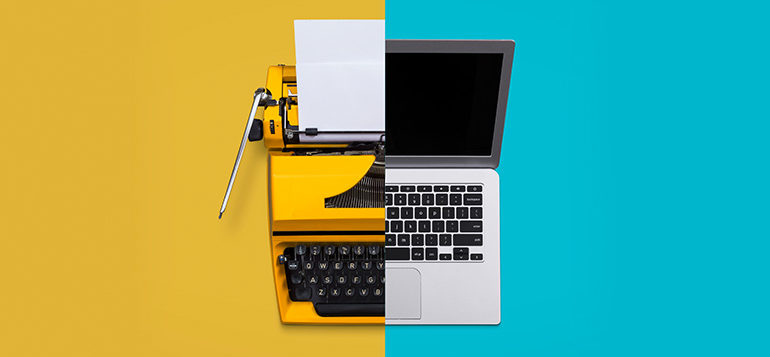All sterile or what?
Sterile products represent a not insignificant part of the medical device market. Many consumables are supplied in sterile condition. Often also as accessories for reusable medical devices. These can be purchased and marketed as a system with the company’s own medical device or approved under the company’s own label. Thus, an active medical device manufacturer can quickly become a manufacturer with sterile medical devices. What does it take to manufacture, sterilize and approve a sterile product? And what needs to be considered when controlling the outsourced processes? If you have been in the sterile products business for a while, you will already know the most important basics and principles. But if you are still at the beginning of your “sterile career” or only have an outdated level of knowledge including obsolete files that drive you to despair, then we would like to take you on a journey through the complex world of sterilization.
We will look at the approach of validation for different sterilization processes, but also deal with the topic of “bioburden”. Likewise, the often underestimated topic of “sterile barrier systems” and the associated packaging validation will receive the necessary attention. After all, each of these sub-areas has its own particular challenge, but they all cannot do without each other.
First, let’s take a look at the terminology and deal first with sterilization using ethylene oxide (EtO).
What does sterile mean?
Sterility refers to the condition of a medical device that is free of viable microorganisms. In practice, however, this condition cannot be proven without restrictions. For this reason, the sterility assurance level (SAL) is used. It indicates the probability of the presence of a single viable microorganism on a product after sterilization. Generally, an attempt is made to achieve an SAL of 10-6, although the level to be achieved should always depend on the end product and its intended use.
The term “sterilization” is defined as a validated process for freeing a product from viable microorganisms.
This sterilization process is validated by means of a process challenging device (PCD). It represents a system designed to present a defined difficulty to a sterilization process. Depending on the method, there may be different approaches to this in the validation process. It can be a real product or a simulated product. For sterilization by means of EtO and the associated validation, for example, it should have poorer gas accessibility than the actual product to be sterilized in order to be used as a worst case and thus be able to transfer the results to the product to be sterilized.
The sterile barrier system represents the primary packaging of sterile medical devices that must maintain sterility after the sterilization process. It prevents the entry of microorganisms and enables aseptic delivery of the product at the point of use. Probably the best known material for sterile barrier systems is TYVEK®, which is combined with other materials to form primary packaging.
Sterilization methods
The three most widely used sterilization methods in medical technology are sterilization by ethylene oxide, by radiation and by moist heat. We would like to focus on these sterilization methods in our series of articles. In addition, there are the less common options of dry heat sterilization and low-temperature steam formaldehyde (NTDF) and water peroxide plasma sterilization.
What is there to know in detail about sterilization using ethylene oxide?
Ethylene oxide is a mutagenic, toxic and highly flammable gas that, when fumigated, kills microorganisms by rendering cellular components inactive. Water serves as a catalyst in these reactions, making relative humidity an important parameter in the reaction. The use of EtO for sterilization of medical devices is widespread, especially for products that are sensitive to heat and radiation. The sterilization process using EtO is relatively complex and subject to strong control by process parameters. Among the most important, but by no means all, are:
Gas concentration
Temperature
Overpressure
Reaction time
In EtO plants, products are usually preconditioned on pallets (quantity depending on the size of the sterilization chamber) first to the temperature and humidity required for the process and then gassed with EtO, with the actual exposure time starting only from the time when the chamber is completely filled with EtO. This phase usually lasts several hours and represents the actual sterilization of the products, which are penetrated by the ethylene oxide during this phase.
Desorption then begins, i.e. the gas is drawn off again from the chamber. In most cases, the products are then transferred to a separate chamber, where the outgassing phase follows. During this phase, residual gas escapes from the products, which is a desired and necessary process step due to the critical properties of EtO. Determining this outgassing phase can be a complex undertaking under certain circumstances, always depending on the design and intended use of the product. The regulatory requirements for this can be found in EN ISO 10993-7 as well as in the respective national legislation and guidelines, some of which contain stricter requirements than the standard.
The above-mentioned process parameters are monitored via various sensors throughout the process and form the basis for the release of the sterilization batch. Requirements for this or for their determination are contained in EN ISO 11135.
The selection of the cycle parameters and the duration of the gassing, exposure and degassing times are strongly dependent on the gas accessibility of the sterile barrier system and the geometry of the medical device. Multilayer packaging or folded layers, narrow tubes, cavities on or in the medical device, as well as the loading structure have a strong influence on gas accessibility, which must be taken into account accordingly.
EtO thus represents a highly complex sterilization method. Disadvantages are the relatively long cycle lengths, the costs and the use of a toxic reagent. Nevertheless, this method is widely used, as other methods put significantly more stress on the materials, thus compromising the safety and performance of medical devices.
EN ISO 11135:2019 – Requirements for sterilization with ethylene oxide.
EN ISO 11135 establishes requirements for the development, validation and guidance of the use of the ethylene oxide sterilization process for medical devices. Many requirements are usually fulfilled by the operators of the EtO plant, e.g. structural regulations, sensor technology in the gassing room or the Installation Qualification (“IQ”) and Operational Qualification (“OQ”) of the plant. Nevertheless, some product-specific activities related to sterilization remain for the manufacturer. Depending on whether or not there is an existing Process Qualification from the operator, the following items may be necessary:
Evaluation of the gas accessibility of the medical device and its sterile barrier system.
Selection of a suitable cycle procedure
Determination of the allowable bioburden prior to sterilization
Proof of product compatibility (evaluation of the safety and performance of the product by the sterilization method)
Proof of suitability of the PCD (Process Challenging Device)
Subordination of own product to an already established PCD
Proof of suitability of the bioindicator (process definition)
Proof of attainment of the Sterility Assurance Level
Determination of possible gas residues and definition of the outgassing phase
Contractual agreement with the contract sterilizer according to the requirements of EN ISO 11135
So what should all be in a validation report, you ask? In addition to EN ISO 11135, the somewhat outdated ZLG paper 3.9 B 26, which lists the minimum contents of validation reports for EtO, can help here. This includes information on the characterization of the equipment, the IQ and the OQ, i.e. activities of the contract sterilizer, over which most manufacturers have no influence. Under the MPG, the relevant documents were often referenced here and an on-site inspection by the contract sterilizer was made possible. How the handling under the MDR with these extensive reports will be established remains to be seen, as it is generally a documentation according to point 3b from Annex II, which are to be “fully included in the technical documentation”.
Often, inexperienced manufacturers in these areas rely on their contract sterilizer or a supplier to perform sterilization on behalf of the manufacturer. This can lead to unclear documentation and responsibility problems. However, the manufacturer of the medical device is responsible for the validation of all process steps with regard to product conformity in the sense of a new approach conformity assessment procedure, as it is represented by the MDR and also already applied under the MDD. If he outsources relevant activities, a control of these activities as well as the conclusion of quality agreements and the review of processes and validation documents are a must for a compliant manufacturer. Many steps of sterilization also affect the actual product design and are therefore to be kept as evidence in Chapter 6.2, Annex II of the MDR. Constructive cooperation between the process owner (usually the contract sterilizer) and the product owner (the manufacturer) is therefore essential and not easy to carry out if process and product knowledge is insufficient. It is therefore also of central importance for manufacturers to build up know-how within their own company and, if in doubt, to seek support from an external expert. Particularly in view of the increased requirements and the harmonization of EN ISO 11135:2014/A1:2019 under the MDR as well as the IVDR, manufacturers should contact their contract sterilizers, if it has not already happened, and check the documentation for compliance with this version of the standard.
Have you already set your sights on EN ISO 11135? But is the fog of requirements still blocking your view? Or do you want to market a sterile product under the MDR for the first time? Contact us, we will be happy to assist you, also in the communication with your supplier.

Hisnija Schilling
Each project is specific – the required tasks and measures for market introduction are to be determined individually.
seleon will advise you on your personal questions without obligation.
CONTACT OUR EXPERTS




